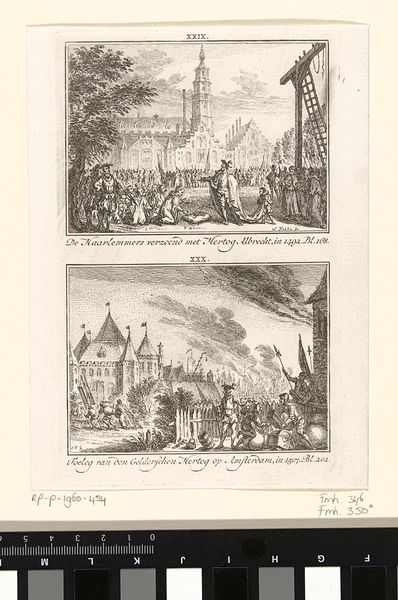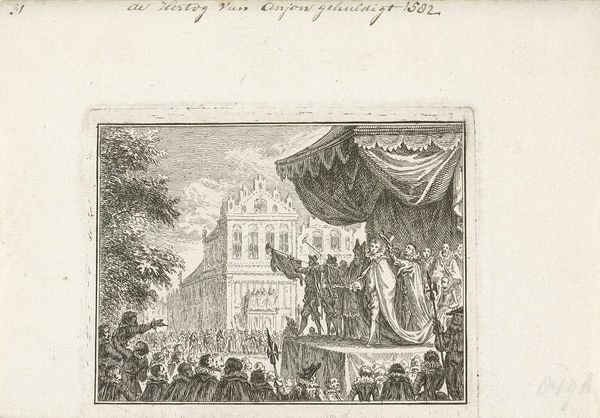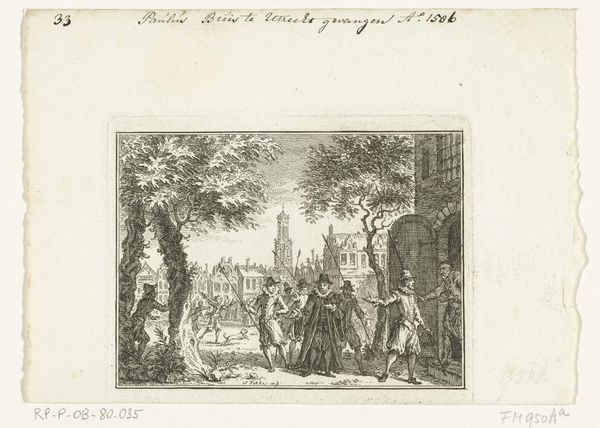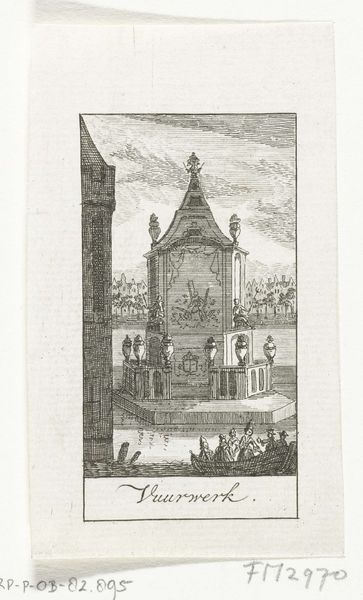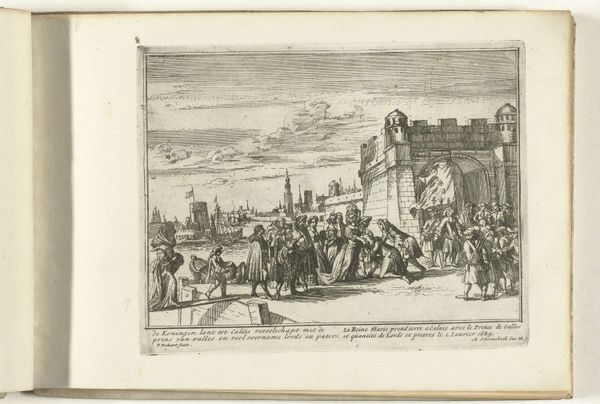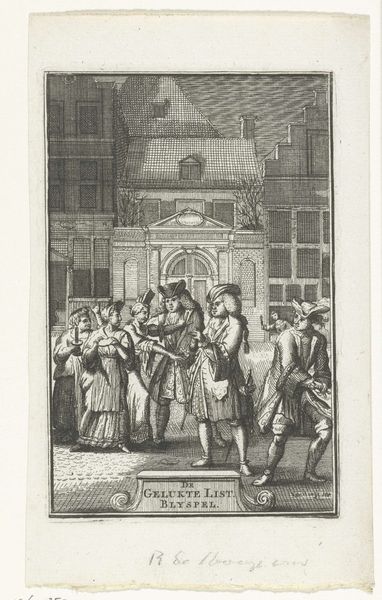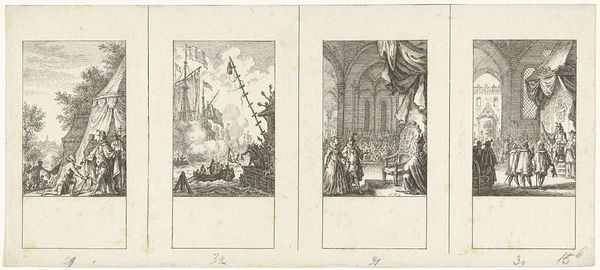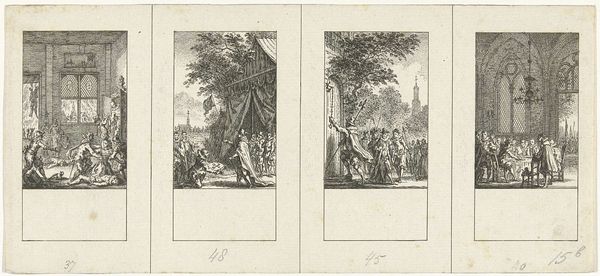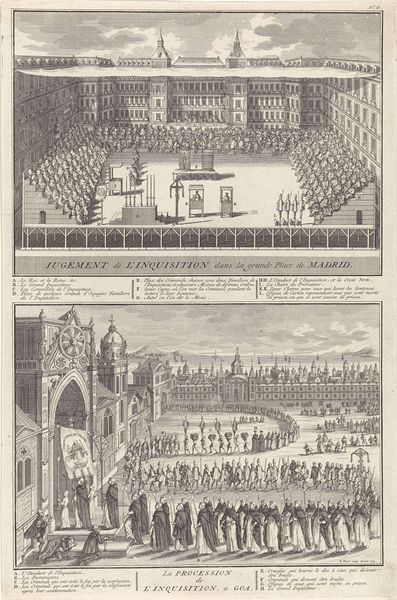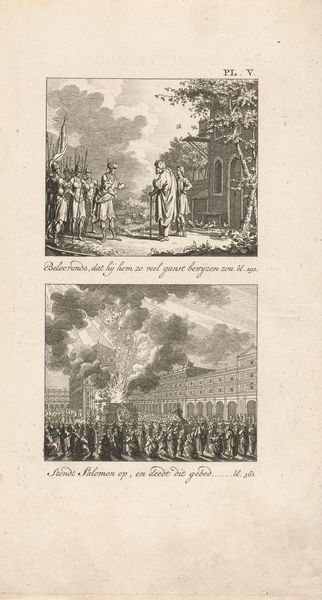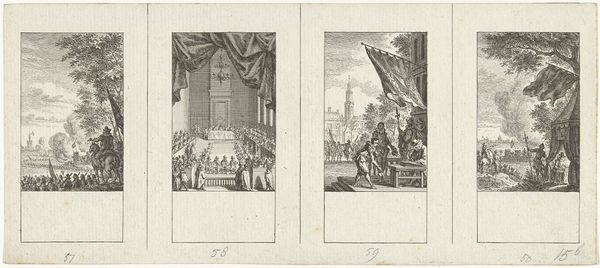
Doorbraak van de Zuidhollandse Waard, 1421, en huwelijk van Jacoba van Beieren en Frank van Borselen, 1434 1750 - 1783
0:00
0:00
drawing, print, engraving
#
drawing
#
medieval
# print
#
landscape
#
history-painting
#
engraving
Dimensions: height 173 mm, width 108 mm
Copyright: Rijks Museum: Open Domain
Curator: This engraving, created between 1750 and 1783 by Simon Fokke, depicts two separate scenes. Editor: My initial reaction is one of contrasts. The upper register seems overwhelmed by this monument that pierces the horizon line. Curator: The upper scene shows "Doorbraak van de Zuidhollandse Waard, 1421", the St. Elizabeth's flood, a catastrophic event in Dutch history. Below that, we see the “Huwelijk van Jacoba van Beieren en Frank van Borselen, 1434." It’s part of a historical series. Editor: Placing natural disaster beside marriage does raise interesting questions about historical constructions of agency and power. In thinking about the context, I wonder how the imagery operates within a larger socio-political narrative in 18th-century Netherlands? Curator: Certainly. Printmaking at that time often served a didactic purpose, reinforcing societal norms. These scenes, despite depicting events from centuries prior, would speak to contemporary concerns of leadership and national identity. Editor: And looking at the lower half, the marriage scene seems deliberately staged, almost theatrical in its composition. What's most striking is the dominance of the male figures: the groom and the clergyman officiating the marriage. Even surrounded by the figures in attendance, Jakoba appears almost passively at the scene, doesn’t she? Curator: That’s a very insightful observation, particularly given the complex story of Jacoba van Beieren’s rule, her multiple marriages, and her struggles for power. Her historical role is certainly filtered here. Editor: So this piece isn’t simply documenting the past, but actively shaping its memory in alignment with particular power structures, wouldn’t you say? This calls attention to whose stories are deemed worthy of memorialization. Curator: Precisely, by visually linking a powerful act of nature and a socially defining ritual in this fashion, it invites us to reflect on both fate and agency. Editor: Yes, examining historical visual media illuminates not just the historical events themselves, but the eras in which those images are made and seen. Curator: Thank you, that offers a powerful lens through which to view Fokke’s work, prompting considerations beyond the aesthetic appeal of this print.
Comments
No comments
Be the first to comment and join the conversation on the ultimate creative platform.
